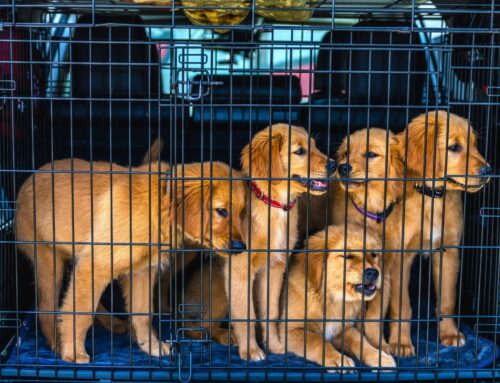When it comes to keeping your cat healthy and happy, nothing is more important than their diet. Cats are unique creatures with specific nutritional needs, and providing them with the best cat food is one of the simplest yet most impactful ways to support their well-being. But with so many choices available, from dry kibble to raw diets, how do you decide which one is best?
This guide will break down everything you need to know about selecting high-quality cat food. We’ll explore the types of cat food, what makes a good diet, and how to cater to your cat’s specific needs, all while keeping your budget in mind. Whether you’re a first-time cat owner or a seasoned pro, this article will help you make informed decisions that benefit your feline friend.
Why Quality Cat Food is Essential
Your cat’s diet is the cornerstone of their overall health. Unlike dogs, cats are obligate carnivores, meaning their bodies are designed to thrive on animal-based proteins. Feeding them poor-quality food can lead to a host of health problems, including obesity, digestive issues, and long-term diseases like diabetes or kidney problems.
High-quality cat food does more than just fill your cat’s belly. It provides the nutrients they need to maintain energy, muscle tone, a shiny coat, and a strong immune system. Investing in good food now can also save you from costly vet bills down the road.
Health Benefits of a Proper Diet
- Enhanced Energy: Protein-rich diets help cats stay playful and active.
- Weight Control: Balanced nutrition prevents obesity and related health issues.
- Healthy Skin and Coat: Omega-3 and omega-6 fatty acids support a shiny, soft coat.
- Stronger Immune System: Essential vitamins and minerals bolster your cat’s natural defenses.
Types of Cat Food: Exploring Your Options
Cats have a variety of dietary options, each with unique benefits and drawbacks. The key is to understand what your cat prefers and what meets their nutritional needs.
Dry Cat Food (Kibble)
Dry food is one of the most popular choices for cat owners due to its affordability, convenience, and long shelf life. It’s easy to store and portion, and many cats enjoy its crunchy texture. Additionally, chewing kibble can help reduce plaque and tartar buildup, contributing to better dental health.
However, not all dry foods are created equal. Many budget brands rely on fillers like corn and soy, which lack nutritional value. Opt for kibble with high-quality animal-based proteins, like chicken, turkey, or lamb, and avoid foods with unnecessary additives.
Wet Cat Food (Canned)
Wet food is often more palatable for cats, especially picky eaters. Its higher moisture content can also benefit cats prone to urinary tract issues or dehydration. Wet food is typically more expensive than dry kibble, and it has a shorter shelf life, so it needs to be refrigerated once opened.
Look for wet food with real meat as the primary ingredient and minimal fillers. Steer clear of products with artificial colors, flavors, or preservatives, as they can be harmful in the long term.
Raw and Freeze-Dried Cat Food
Some cat owners opt for raw or freeze-dried diets, which aim to replicate what a cat would eat in the wild. These foods are often made with high-quality, raw meats and no grains, providing a diet closer to a cat’s natural prey. Raw diets can be expensive, and they may require extra care in handling and storage.
If you’re considering a raw food diet for your cat, it’s essential to consult your vet to ensure it’s nutritionally balanced and safe. A freeze-dried version might be a safer option, as it’s less prone to bacterial contamination.
Grain-Free and Limited Ingredient Diets
Grain-free diets are popular for cats with food sensitivities or allergies. These foods exclude grains like corn, wheat, or soy and instead use high-quality protein and vegetables. Limited ingredient diets go one step further by focusing on a few key ingredients, making it easier to pinpoint allergens and sensitivities.
While grain-free diets can be beneficial for some cats, they’re not necessarily better for every cat. Always consult with your veterinarian before switching your cat’s diet, especially if they have no known food sensitivities.
How to Choose the Best Cat Food
With so many options available, selecting the right food can be overwhelming. To ensure you’re choosing the best food for your cat, consider the following factors:
Age and Life Stage
Kittens, adult cats, and senior cats have different nutritional needs. Kittens require more protein, fat, and calories to support their rapid growth. Adult cats need a balanced diet to maintain healthy body weight and muscle mass, while senior cats may need food that’s easier to digest and helps with joint health.
Health Conditions
If your cat has any specific health conditions like diabetes, kidney disease, or allergies, talk to your vet about the best food for their needs. Specialized diets exist for cats with medical conditions, and they can help manage symptoms and improve overall quality of life.
Flavor Preferences
Cats can be very particular about their food’s flavor and texture. While some cats will eat anything you put in front of them, others have more discerning palates. If your cat refuses to eat their food, try experimenting with different flavors and textures to find something they enjoy.
Dealing with Picky Eaters: What to Do When Your Cat Refuses Food
Cats are notoriously selective eaters. What seems like a perfectly nutritious meal to you might be completely unappealing to your feline companion. If your cat is turning up their nose at their food, it’s important to address the issue while ensuring their dietary needs are met.
Understanding Why Cats Are Picky
Cats’ pickiness often stems from their instinctual need to avoid potentially harmful food. Their sense of smell is far more developed than ours, so they often rely on aroma to decide whether something is safe to eat. Changes in texture, temperature, or even the placement of their food dish can also trigger rejection.
Health issues can also contribute to picky eating. If your cat suddenly loses interest in their meals, consult a veterinarian to rule out dental problems, digestive issues, or other underlying conditions.
Tips to Entice Your Picky Cat to Eat
1. Gradual Transitions
Cats dislike sudden changes in their diet. If you’re switching to a new food, mix it gradually with their current food over 7–10 days. Start with a small amount of the new food and slowly increase the ratio until your cat adjusts.
2. Warm Up Their Food
Cats are drawn to food by its aroma. Warming up wet food can release its scent, making it more enticing. Place the food in a microwave-safe dish and heat it for a few seconds, ensuring it’s not too hot before serving.
3. Experiment with Textures
Cats have preferences for textures. Some might prefer the smooth consistency of a pate, while others enjoy chunks or shredded food in gravy. Trying different textures can help you discover what your cat likes best.
4. Add Toppers or Mix-Ins
Enhance the appeal of their food by adding enticing toppers. Options like freeze-dried meat crumbles, a small amount of tuna juice (low-sodium), or commercial cat food toppers can transform an unappetizing meal into a treat.
5. Create a Calm Feeding Environment
Stress can make cats reject food. Ensure their feeding area is quiet, away from loud noises or other pets that might cause anxiety. Cats prefer routine, so feeding them at consistent times in a familiar space can encourage regular eating habits.
6. Offer Variety Without Overwhelming Them
While cats thrive on consistency, some felines benefit from having a few flavor options within the same brand or food line. Rotate between chicken, fish, and turkey flavors to keep them interested, but avoid switching brands too frequently, as this can cause digestive upset.
7. Use Puzzle Feeders
Cats are natural hunters, and engaging their instincts can make mealtime more enjoyable. Puzzle feeders or food-dispensing toys encourage your cat to “hunt” for their meal, turning feeding time into an interactive activity.
When to Seek Help
If your cat consistently refuses food for more than 24–48 hours, consult a veterinarian. Prolonged refusal to eat can lead to hepatic lipidosis, a serious liver condition. The vet may recommend appetite stimulants, specialized diets, or medical treatments if underlying health issues are present.
Picky Eaters and Nutritional Balance
Even picky eaters need balanced nutrition. Avoid catering solely to their preferences for treats or unhealthy foods, as this can lead to nutritional deficiencies. Stick to high-quality cat food and use the tips above to make it more appealing.
Cats may be creatures of habit, but patience and a bit of experimentation can help you find the perfect solution for even the fussiest feline.
Conclusion: Choosing the Best Cat Food for Your Feline Companion
Selecting the right cat food is one of the most important decisions you’ll make as a pet owner. By understanding your cat’s nutritional needs, exploring different types of food, and paying attention to their unique preferences, you can ensure they live a long, healthy, and happy life.
Whether you opt for dry kibble, wet food, or a specialized diet, always prioritize high-quality ingredients and consult your vet if you have any questions or concerns. With the right food, your cat will not only thrive but also enjoy every meal they eat.




